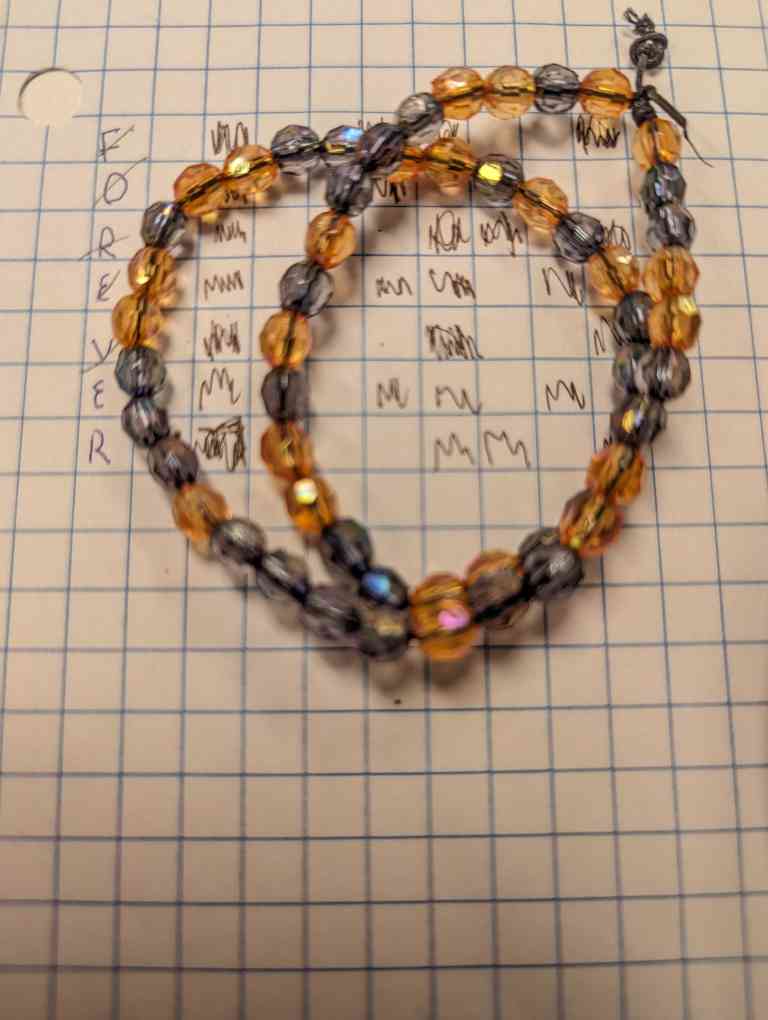“Educators critically examine their own biases, attitudes, beliefs, values and practices to facilitate change. Educators value and respect the languages, heritages, cultures, and ways of knowing and being of First Nations, Inuit and Métis. Educators understand the power of focusing on connectedness and relationships to oneself, family, community and the natural world. Educators integrate First Nations, Inuit and Métis worldviews and perspectives into learning environments.” – BCT

I know a lot. I’ve taken classes, written papers, and followed activists on social media. I’ve done a march, read the statistics, and I’ve even tried beading with limited success, (See Above). I have so much to learn and a lot of work to do both internally, and building relationships with those gracious enough to give me the chance to learn. I’m encouraged by the concept of two eyed seeing, especially in the context of external relevancy for classroom education. Reading Cheryl Bartlett’s “Two-Eyed Seeing in the Classroom Environment: Concepts, Approaches, and Challenges.” really helped me understand this belief system better after I first heard the term during a presentation from representatives of Kwadacha Nation.
One of the really encouraging things about the new BC curriculum is it seems to create ample space for meaningfully indigenous pedagogy, following a growing wealth of research that Indigenized educational approaches are incredibly effective. Jacqualine Lever’s Indigenous garden project is a great example of connecting curriculum to community and indigenous ways of knowing and learning. Integration is a focus of the UNBC lesson plan template. A valuable tool for making sure that I’m meaningfully incorporating indigenous ways of learning in a way that’s meaningful. These ways of knowing aren’t just inclusive of a worldview often pushed outside of education, they’re effective and fun. I personally find the First Persons Principle of Learning; Learning is embedded in memory, history, a valuable way to achieve cross curricular integration and include more learners, especially those with exceptional learning styles. When teaching math I used an imagined example of two basketballs for sale. The class was learning to convert percent’s and calculate sale amounts as part of a greater unit on financial literacy. Basketball was incredibly popular and important to the grade 7 students in my practicum placement. So I asked which of two basketballs I should purchase. The prices were similar with different discount percentages meaning one would be cheaper than the other. This example tied to an established interest within the community of the classroom, and made this quick math example narrative instead of memory based review. SD57 educator Samantha Morey presented a wonderful example of using a story to introduce a topic through story. She used Rhonda Girard’s The First Salmon Run to introduce concepts of time. Using this established understanding students then created their own stories. They were engaged in math in a way that she expressed was miraculous. All this from the power of story based learning. Education has an unfortunate history and there’s a ton of work to be done. Niigaan Sinclair highlights how Indigenous youth and children are a rapidly growing demographic meaning education has a chance to do valuable work for a group it historically failed. I firmly believe that good education is located in place and land. I live on Lheidli lands cared for by generations of ancestors pre dating contact and colonialism with a long and complex history. To teach otherwise or ignore the impact of colonialism is dishonest. As an Educator in these territories an openness to learning from Indigenous community, Academics, and my students, is key to ensuring I continue my growth as an educator committed to decolonial education and standard 9.
